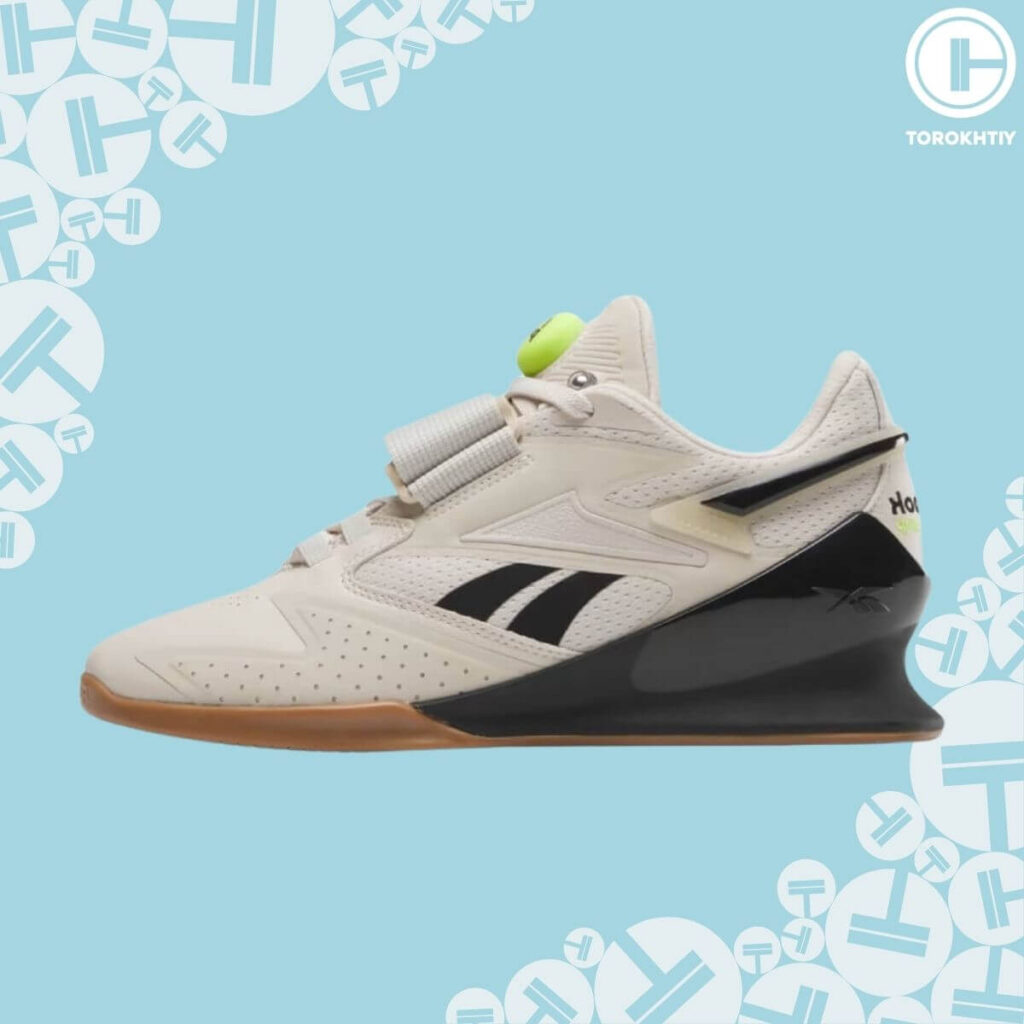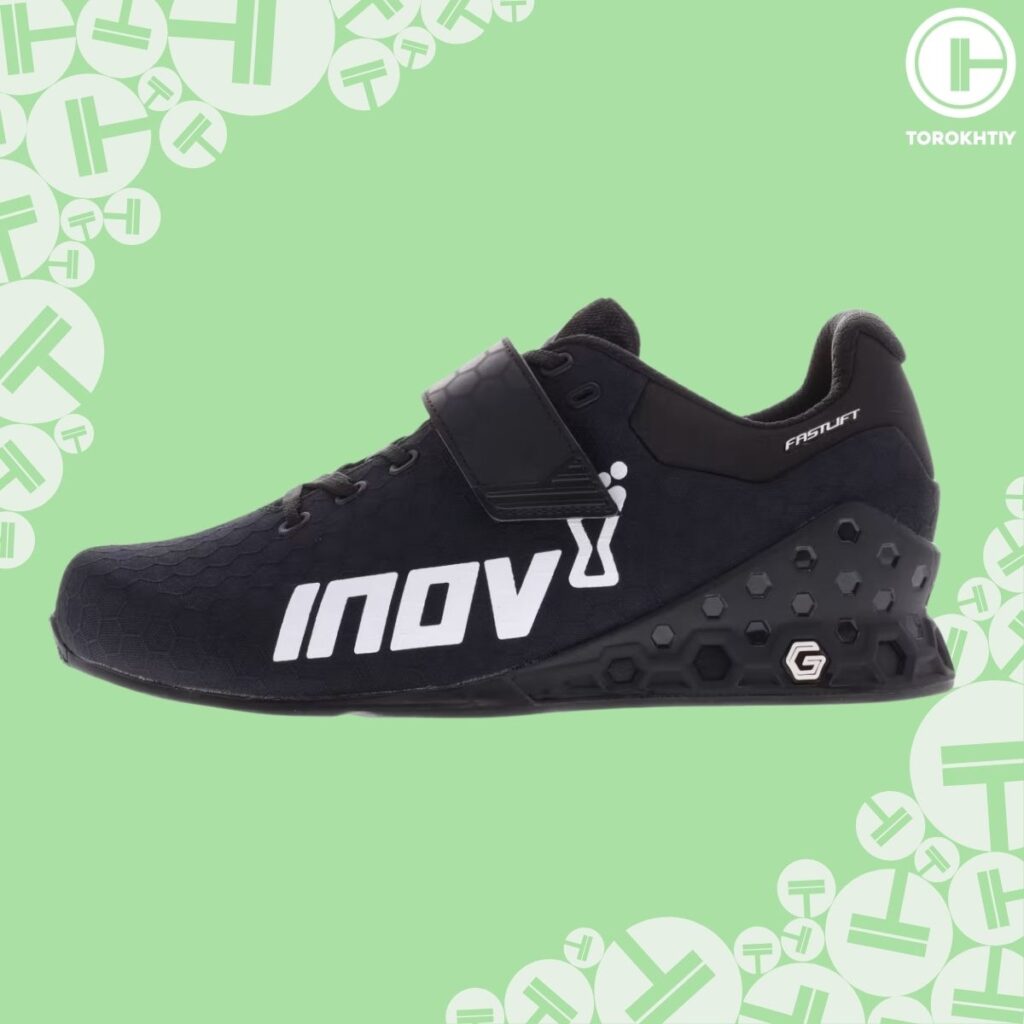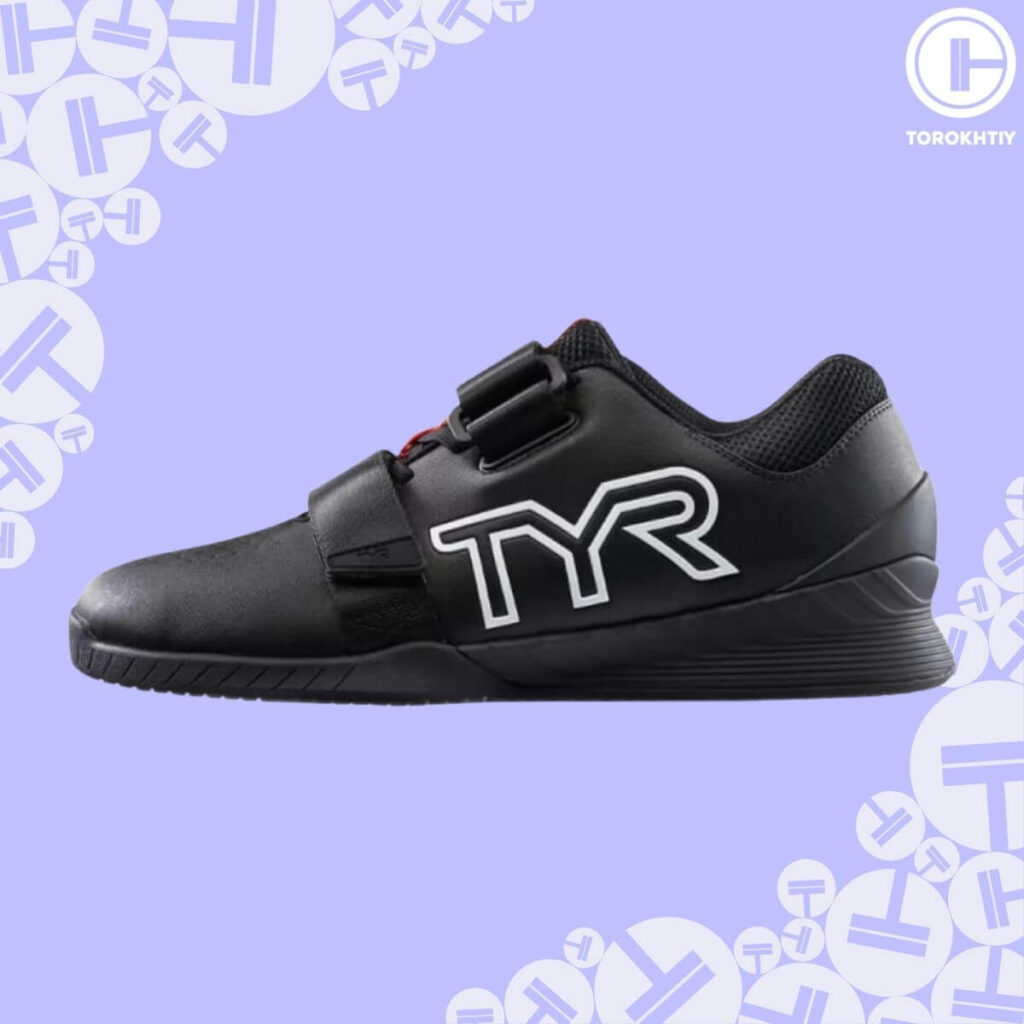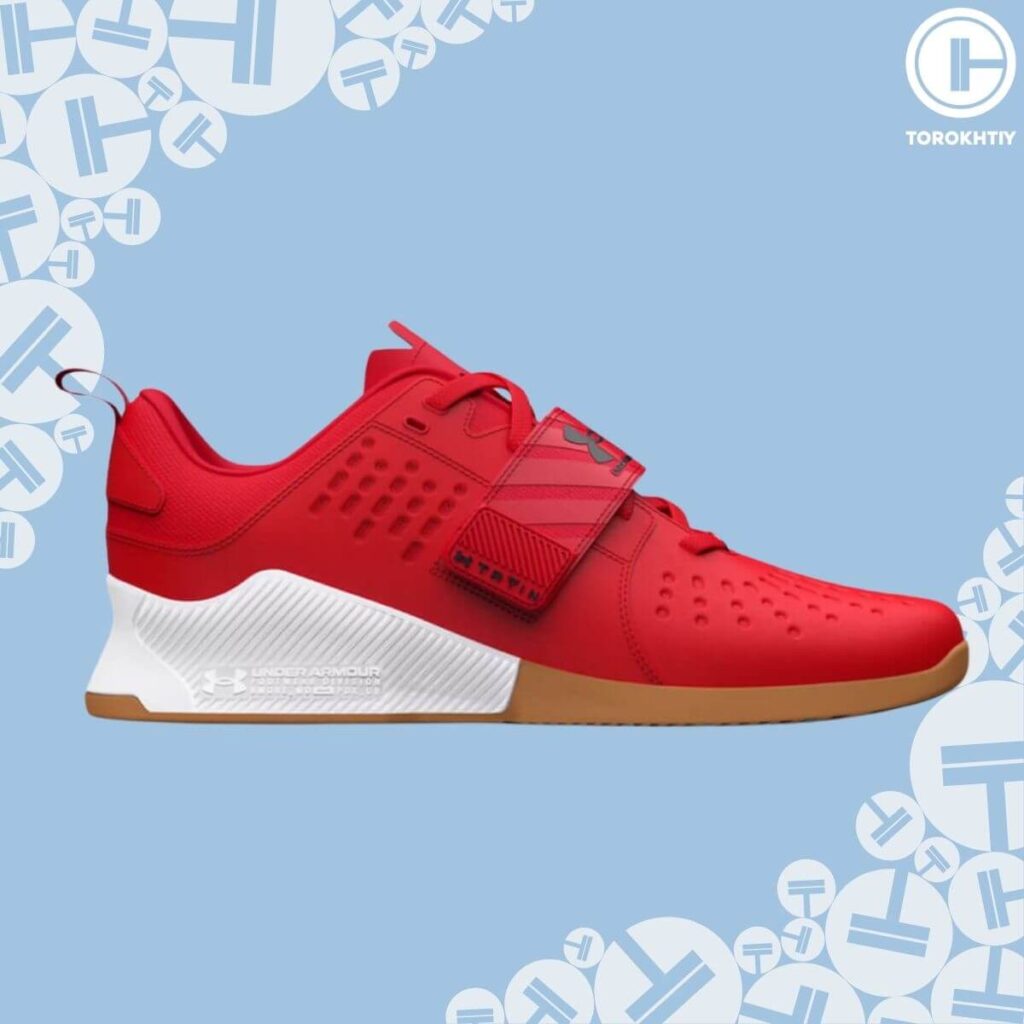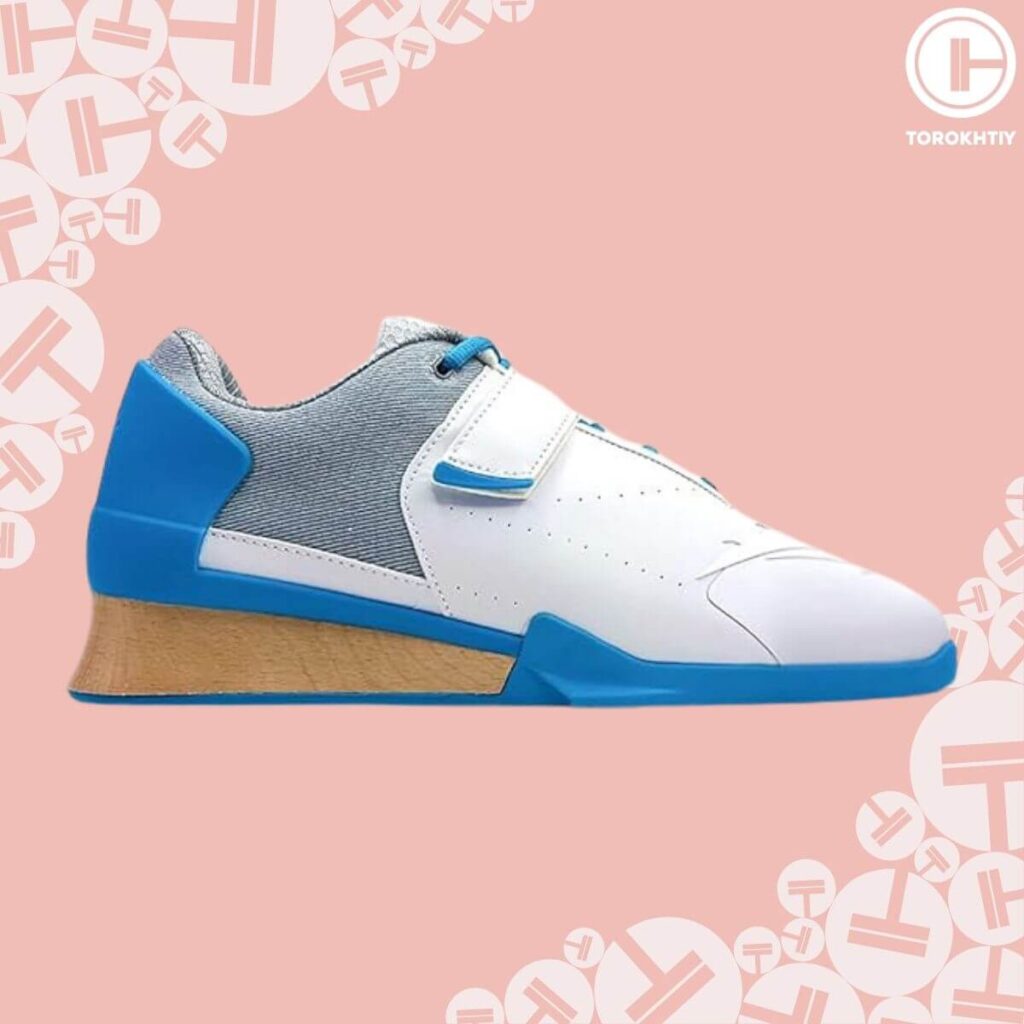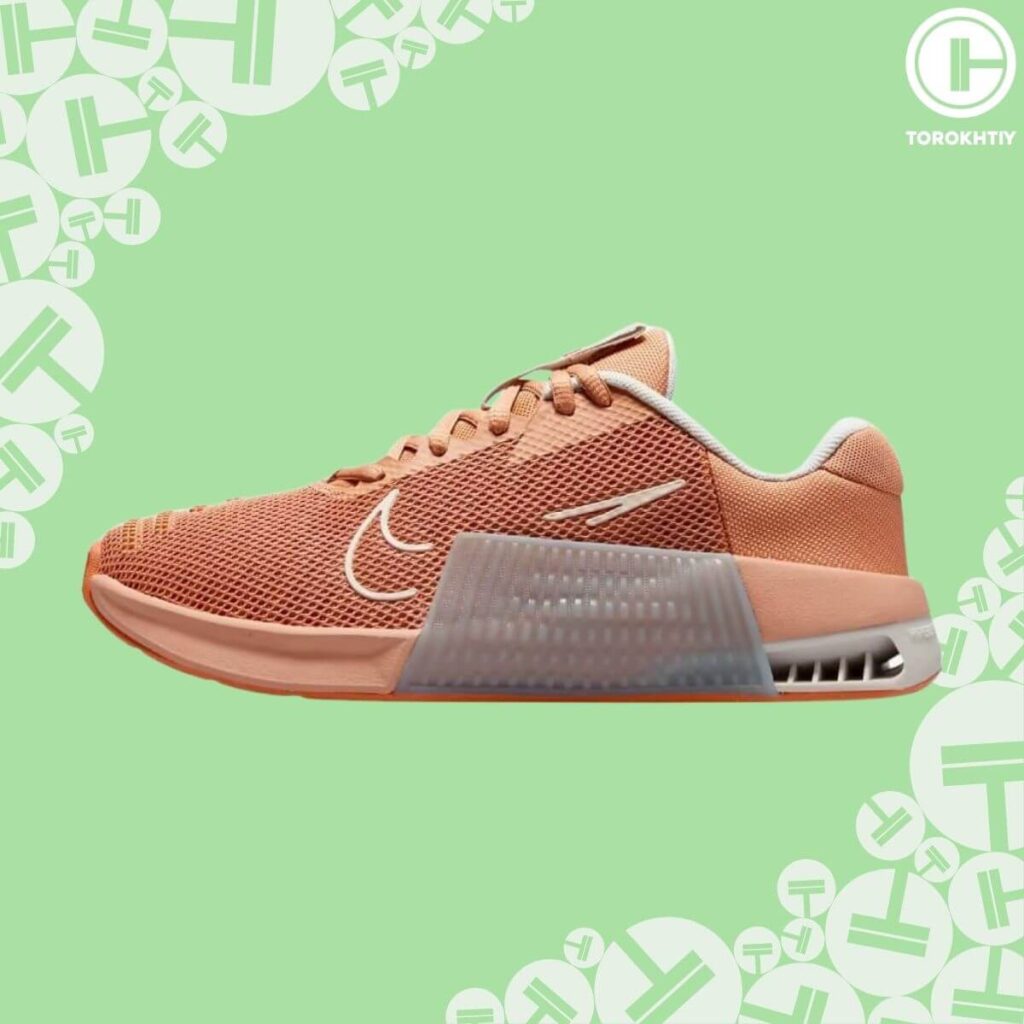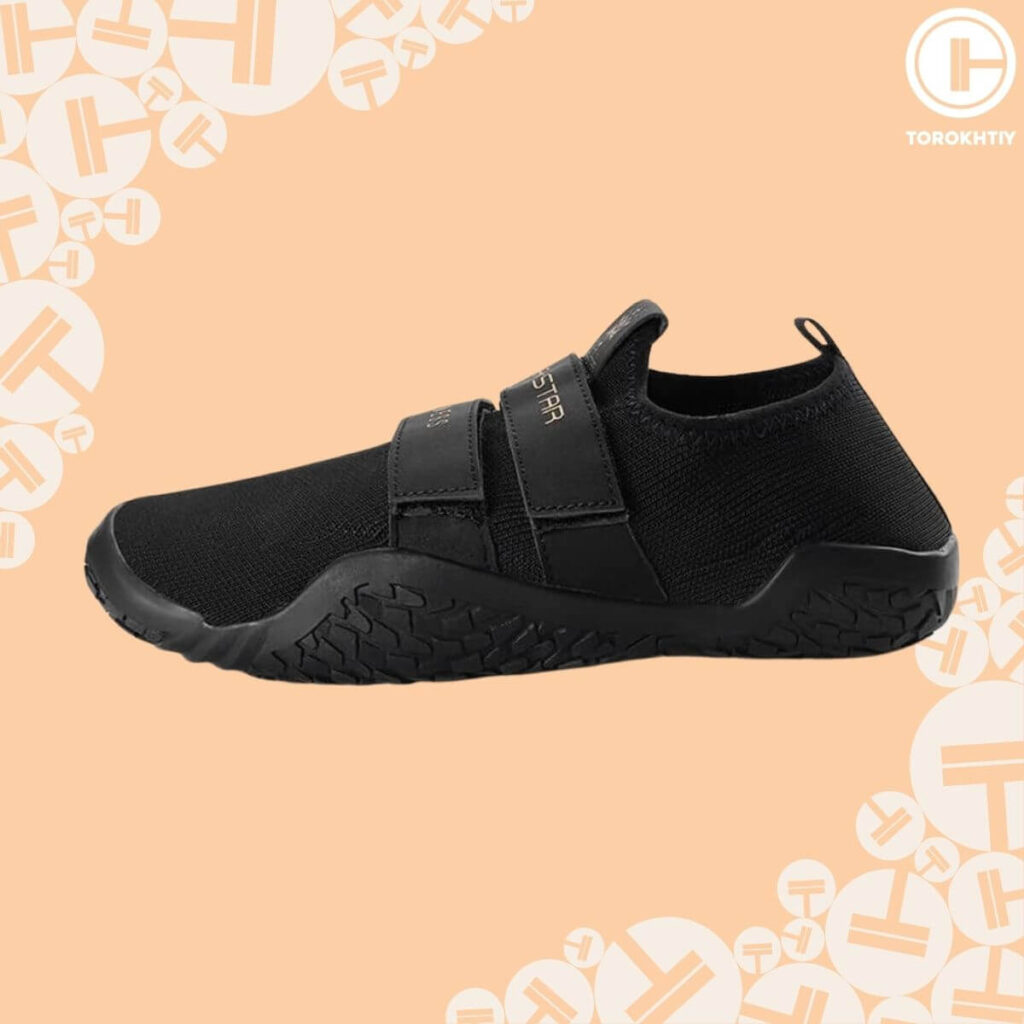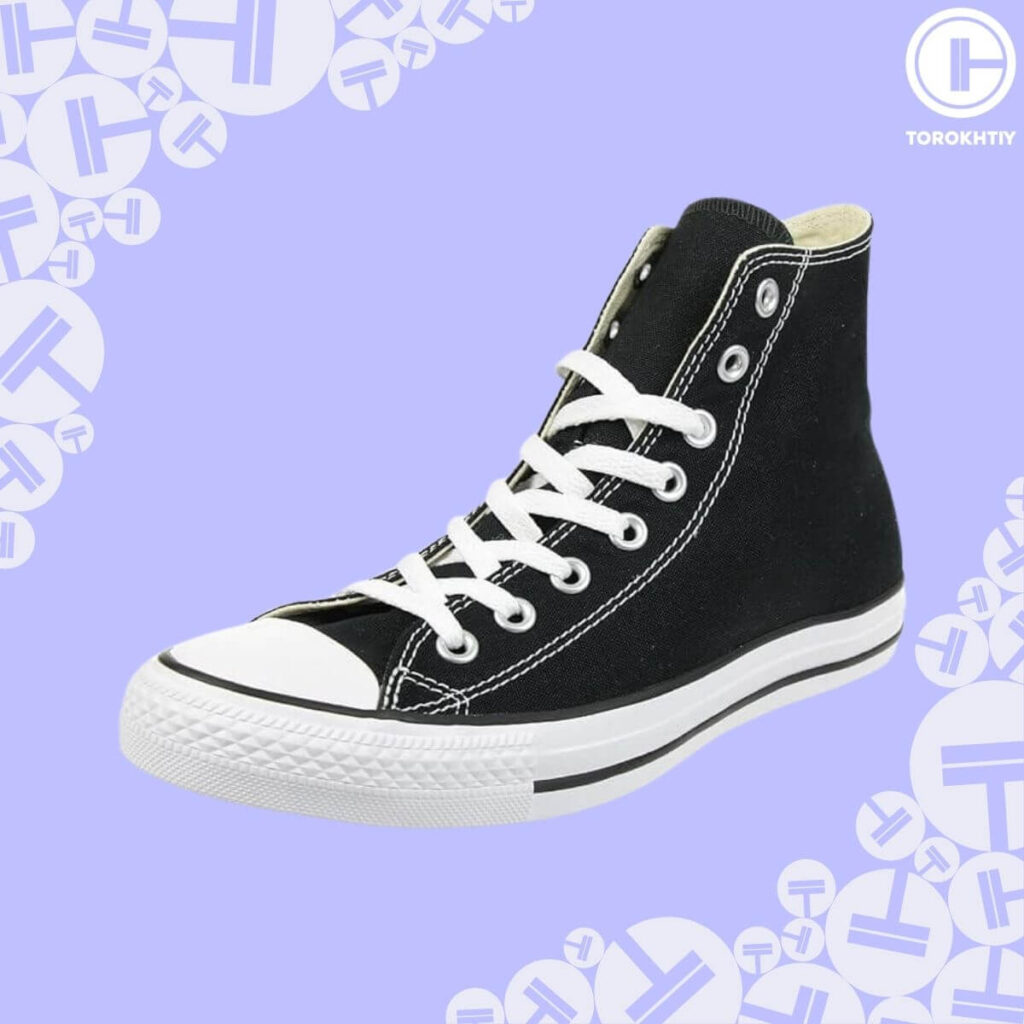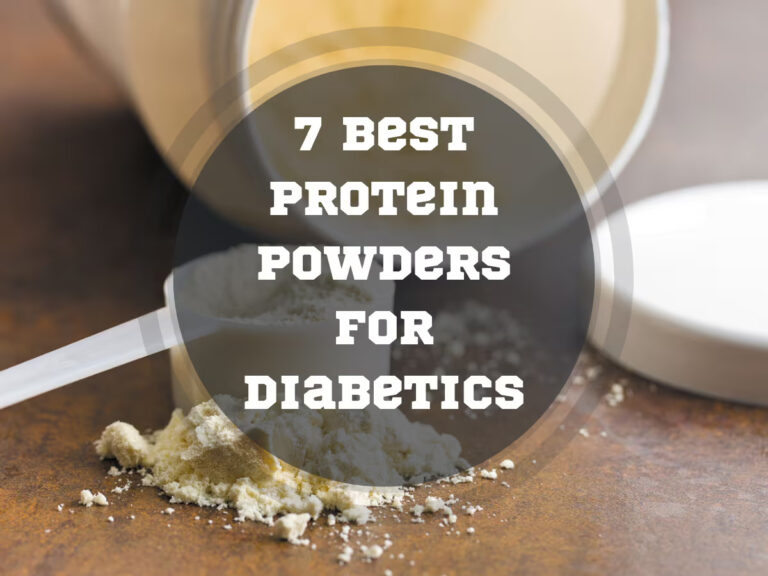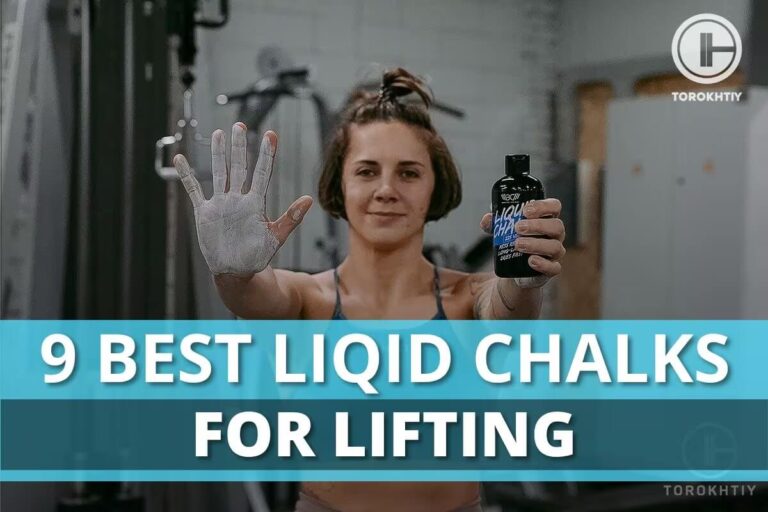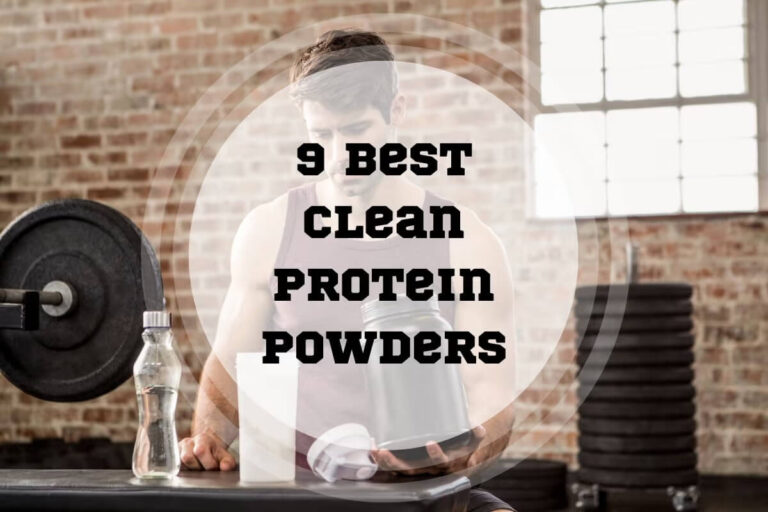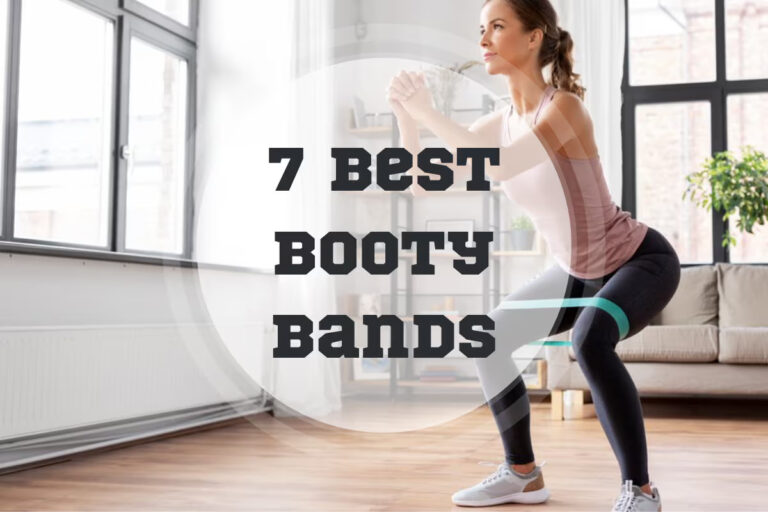8 Best Weightlifting Shoes For Women in 2025
Reviewed by: Oleksiy Torokhtiy (21 years of Oly Lifting experience)
Are you a female weightlifter looking for the perfect pair of lifting sneakers for women? The right type of footwear not only looks cool but has a major impact on your lifting performance and safety.
In this guide, we’ll cover the best weightlifting shoes for women, as well as talk in-depth about the importance of proper footwear on your ability to weightlift.
In a hurry?
In a hurry and can’t keep reading? How about you check out the REEBOK LEGACY LIFTER III.
The Reebok Legacy Lifter III are hands down the best weightlifting shoes for women. What makes these shoes such an easy recommendation are the classic design, an abundance of features, and a modest price tag.
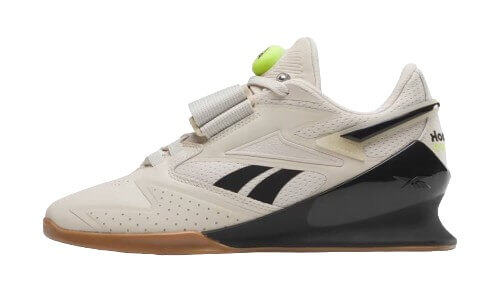
For this article, our team of professional athletes and certified personal trainers has rigorously reviewed 39 products. We’ve dedicated a total of 468 hours to testing most of them, and we’ve based our evaluations on six key factors.
Apart from this, we’ve also examined hundreds of online reviews. Our list is frequently updated, so feel free to share your experiences in the comments section.
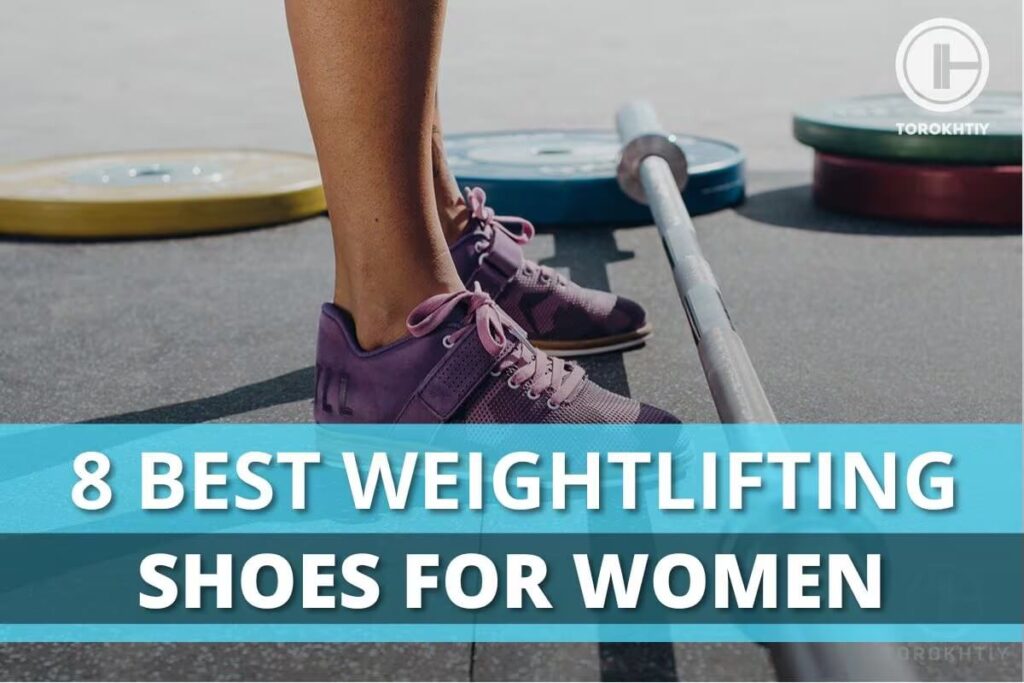
Top 8 Best Weightlifting Shoes For Women Reviewed
- REEBOK LEGACY LIFTER III – Top Pick
- INOV-8 FASTLIFT POWER G 380 – Runner-up
- TYR L-1 LIFTER – Best Colorful
- UnderArmour Reign Lifter (Unisex)
- VELAASA Strake Olympic Weightlifting Shoe – Best With Wooden Heel
- Nike Metcon 9 – Best for Cross Training
- Lara Star Deadlift Shoes – Best Barefoot Model
- Converse Chuck Taylor All-Star – Best Budget Pick
| Product | Total | Stability | Materials | Durability | Breathability | Comfort | Grip |
|---|---|---|---|---|---|---|---|
| Reebok | 59 | 10 | 9 | 10 | 10 | 10 | 10 |
| INOV-8 | 58 | 10 | 10 | 10 | 9 | 9 | 10 |
| TYR | 57 | 10 | 9 | 10 | 9 | 9 | 10 |
| UnderArmour | 56 | 10 | 9 | 10 | 8 | 9 | 10 |
| VELAASA | 55.5 | 10 | 10 | 9 | 8.5 | 9 | 9 |
| Nike | 55 | 9.5 | 9.5 | 9 | 9 | 9 | 9 |
| Lara Star | 54.5 | 9 | 9 | 8.5 | 10 | 9 | 9 |
| Converse | 54 | 9 | 9 | 8 | 10 | 9 | 9 |
1. REEBOK LEGACY LIFTER III
The Reebok Legacy Lifter III are hands down the best weightlifting shoes for women. What makes these shoes such an easy recommendation are the classic design, an abundance of features, and a modest price tag.
What immediately sets these shoes apart is how well they fit. Most brands attempt to save on cost production by simply making male lifting shoes in smaller sizes and labeling them “women’s” or “unisex” – but not Reebok. These are true-to-size women’s lifting shoes made to empower, not just fit in.
The outsole design of the Legacy Lifters has remained unchanged for a good reason: why fix what isn’t broken? The tight traction pattern on the bottom grips as well as ever, meanwhile the stability plate beneath the heel adds a bit of weight to the back, preventing rocking back and forth.
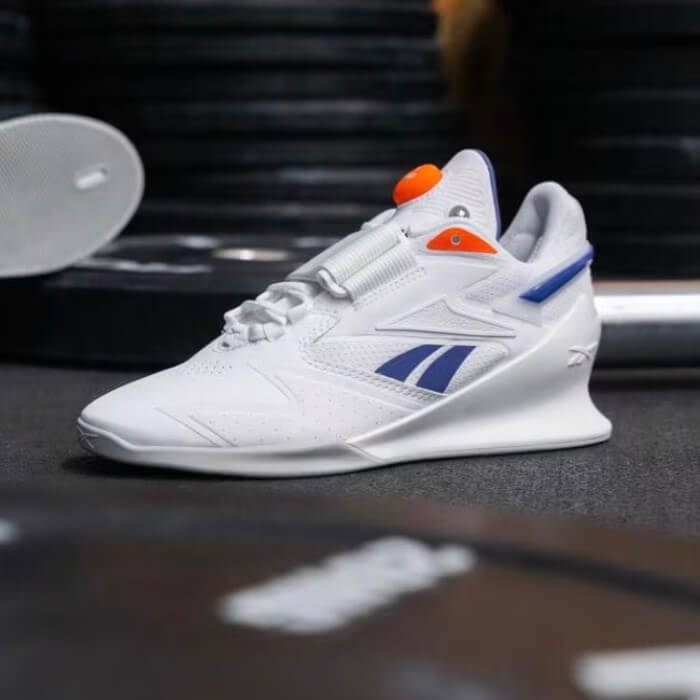
Additionally, a small suction cup on the bottom seals off air to provide a locked-in-place feel. Moreover, the 22-mm heel lift is moderately high, enough to feel the difference without being overwhelming.
The sneakers are surprisingly comfortable even in prolonged training sessions. Between the textile upper and numerous air holes around the toe box, you can expect steady airflow to keep your feet cool. On top of that, the anti-microbial sockliner prevents the development of bacteria and fungi even during your most heated training sessions.
These shoes fit like a glove thanks to the tight lacing and midfoot strap, but that’s not all. If by any chance they feel loose when tied, they come equipped with the iconic Reebok Pump mechanism. Simply press the pump a few times to let the tongue inflate until the fit is nice and snug and you’re set.
The Reebok Legacy Lifter III are hands down the best weightlifting shoes for women. What makes these shoes such an easy recommendation are the classic design, an abundance of features, and a modest price tag.
Positives:
Could be better:
2. INOV-8 FASTLIFT POWER G 380
Our runner-up best women's weightlifting shoes are the Power G 380 by INOV-8. The UK-based brand has been making waves in the apparel industry recently, as their name is not just a play on words.
While other companies often play it safe by copying each other's designs, INOV-8 takes a different approach. They invest heavily in material research, aiming to create cutting-edge gear. What they’re making today is looking to be the future of footwear.
Instead of your typical knit mesh or leather upper, INOV-8 opted for using Ripstop, an intricately woven nylon that’s both incredibly lightweight and resistant to wear and tear, while still allowing airflow. The shoes come in a wide range of sizes from 6 to 10.5. To ensure a tight fit, the brand added wider strap closure on top of tight lacing.
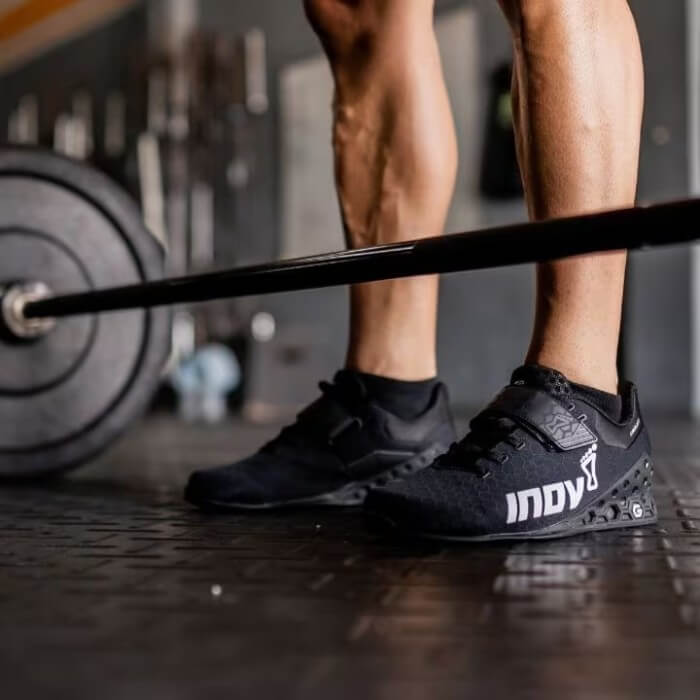
The hexagonal shapes on the exterior of the shoe are more than just a stylish design choice. They actually represent the core material used in these shoes: Graphene. Graphene is a remarkable material known for being strong and lightweight, as well as having exceptional grip capabilities.
When viewed under a microscope, it takes on the form of a hexagonal honeycomb, which is why the shoe design incorporates this pattern. By adding a layer of Graphene onto the outsole, INOV-8 managed to create a shoe with unparalleled traction and grip on all surfaces, whether indoors or outdoors.
Our runner-up best women's weightlifting shoes are the Power G 380 by INOV-8. The UK-based brand has been making waves in the apparel industry recently, as their name is not just a play on words.
Positives:
Could be better:
3. TYR L-1 LIFTER
The TYR L-1 Lifter is more than meets the eye. While it’s not going to blow you away with an abundance of features or innovative design choices, for what it does it does well.
The TYR L-1 Lifter is constructed with durable leather for its main upper. While leather is tougher than most mesh materials, it can feel stiffer and less breathable. However, the L-1 Lifter addresses this with its wider design and large patent-pending anatomical toe box, ensuring a comfortable fit that doesn't feel restrictive despite the leather.
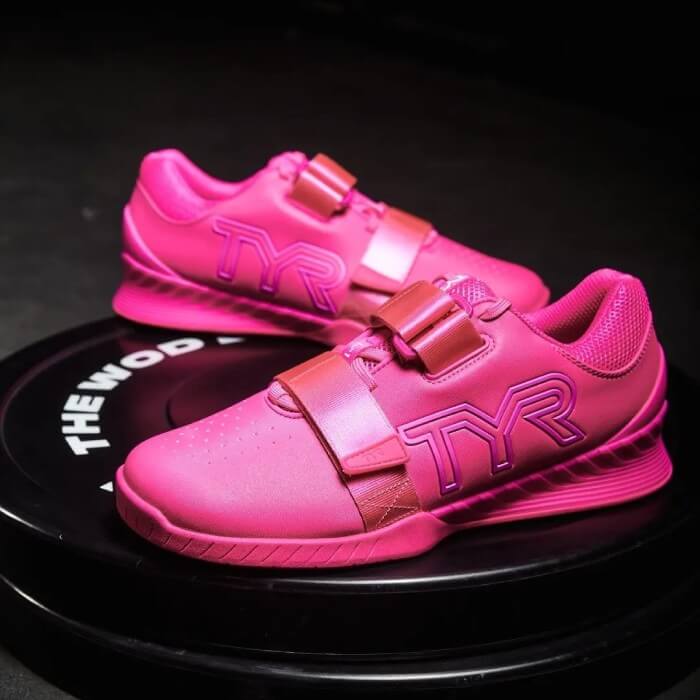
Along with its performance features, the TYR L-1 Lifter offers stylish color options, including a captivating flower pattern that adds flair to your lifting gear. For a secure fit, the shoe incorporates two security straps across the footbridge, enhancing stability and allowing you to customize the fit.
The outsole of the L-1 Lifter is designed with a sizable suction cup at the center, surrounded by an intricate hexagonal pattern. This combination provides excellent grip and traction on various surfaces, ensuring you can perform your lifts safely and confidently.
The TYR L-1 Lifter is more than meets the eye. While it’s not going to blow you away with an abundance of features or innovative design choices, for what it does it does well.
Positives:
Could be better:
When most people think about athletic shoes, the brands that usually come to mind are Nike, Adidas, Reebok, and the like.
However, in recent years Under Armour has solidified itself as a top choice among the best brands, taking over the world of weightlifting, with the highly durable and protective Reign Lifter as the staple piece of their lifting shoe roster.
The UnderArmour Unisex Reign Lifter is built with a premium synthetic leather upper that offers both durability and a luxurious look, making these some of the best powerlifting shoes for women.
The wide foot strap securely locks your feet in place and does not seem to lose stickiness even after hundreds of wears. Using the fabric loop on the heel, the shoes can easily be slid on and off the foot, preventing you from accidentally stepping on and breaking in the heel tab.
Although these shoes excel in many areas, they lack advanced breathability features, which may result in slightly less comfort during extended use.
The outsole of the Reign Lifter is constructed with a full-length durable rubber compound and features a multidirectional tread pattern. This ensures reliable traction and grip on various surfaces.
Additionally, the TPU-injected heel lift provides a slight incline, promoting better posture and helping you execute more complex lifts.
The UnderArmour Unisex Reign Lifter is built with a premium synthetic leather upper that offers both durability and a luxurious look, making these some of the best powerlifting shoes for women.
Positives:
Could be better:
5. VELAASA Strake Olympic Weightlifting Shoe
VELAASA opted for an interesting design choice that makes their Olympic weightlifting shoes unique and worth taking a look at. Instead of using a typical hard plastic material such as TPU, they opted to make their heel out of wood.
Wooden heels are normally seen on premium dress shoes, so it’s no surprise that some sports brands are looking into adding them as well. As a material, wood is surprisingly rigid, although it comes at a slight cost of comfort.
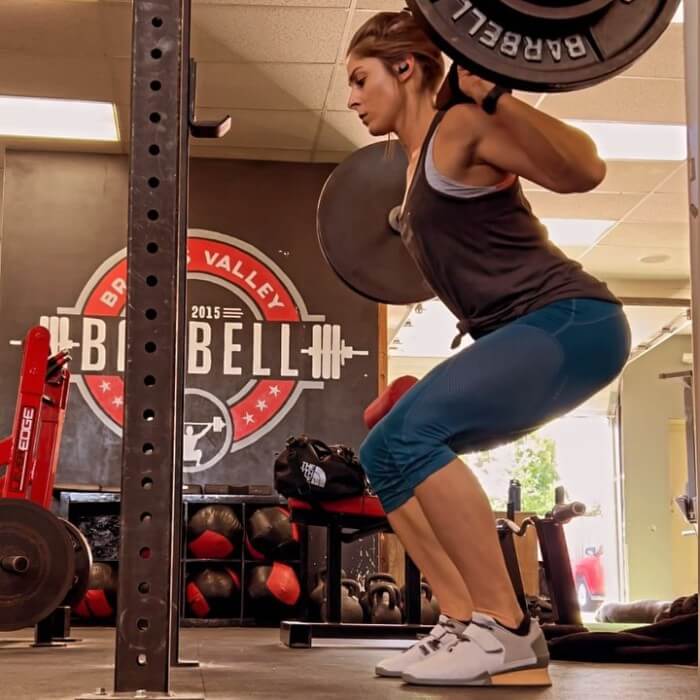
Another feature of the Strake worth mentioning is the enclosed lacing system. This type of lacing - where the laces are actually positioned underneath the upper - is surprisingly underutilized in women's squat shoes, letting VELAASA score an extra point for security and fit.
Other than that, what’s left is a fairly basic Olympic lifting shoe. The heel height is a standard 22mm, the upper is made out of synthetic leather, and the outsole is a thin rubber. Yes, they’re durable, but the price can be a bit over the place depending on where you shop.
VELAASA opted for an interesting design choice that makes their Olympic weightlifting shoes unique and worth taking a look at. Instead of using a typical hard plastic material such as TPU, they opted to make their heel out of wood.
Positives:
Could be better:
6. Nike Metcon 9
The Nike Metcon series is instantly recognizable in the cross-training community due to its popularity. Globally released in August, the Metcon 9 series is a worthy successor to the popular series 8 and addresses some of the issues athletes typically had with the previous version.
Nike is known to prioritize visual appeal, investing heavily in product design on top of functionality. The Metcon 9's upper boasts the familiar lightweight textile mesh typically found in training sneakers but with an innovative twist.
Utilizing haptic print technology, they add a 3D texture that enhances the shoe's surface, reducing dirt retention and simplifying cleaning.
The Metcon 9 brings back the Hyperlift heel plate, which is now bigger and a bit heavier than before.
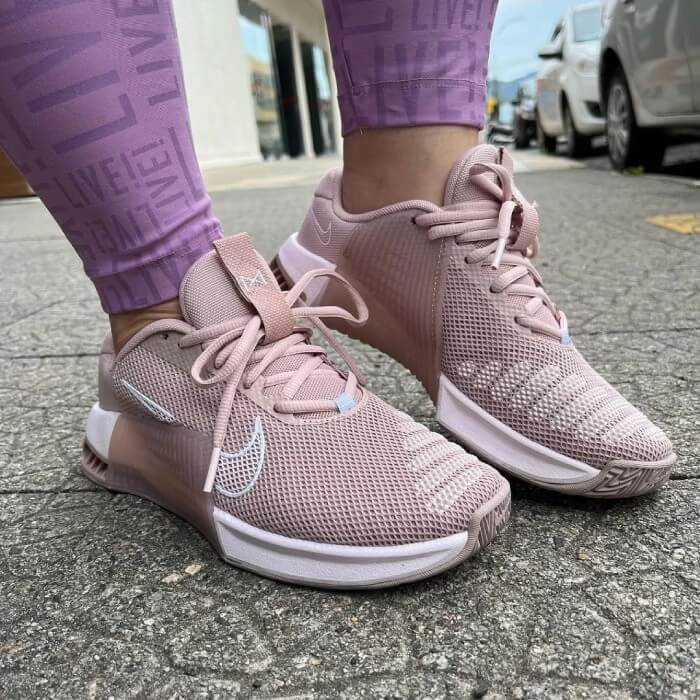
This gives the shoes more weight in the heel, which helps with balance during heavy lifting. The stability this provides makes them comparable to the best weightlifting shoes.
One feature that athletes had issues with in the previous Nike Metcon shoes was the narrow toe box. While it did make the shoes appear slim and modern, it felt restrictive and uncomfortable when your feet would naturally spleen. The good news is the Metcon 9 finally addressed this issue by adding a wider toe box.
Additionally, thanks to the lace locking mechanism on the tongue, you can rest assured these shoes won’t come undone in the heat of the exercise.
While the previous versions of the Metcon shoe used Nike React foam cushioning in the midsole, this time they opted for a dual-density foam. This was done in an attempt to balance out the shoes both for lifting and movement. It’s stable and responsive, but the difference may surprise those who previously used the Metcon 7 or 8.
The Nike Metcon 9 is a noteworthy addition to the popular Metcon series, addressing previous athlete concerns and incorporating innovative design and performance-enhancing features.
Positives:
Could be better:
7. Lara Star Deadlift Shoes
If you’ve been around public gyms for some time, you might have noticed some people deadlifting barefoot (or just in socks). As an exercise, deadlifts have almost no dynamic movement - it’s pretty much just plating your feet into the ground and pushing as strongly as possible.
Although going barefoot is a popular choice, specialized deadlift shoes like the Lara Star offer nearly the same effect, while still being safer and more hygienic.
These slip-on shoes are lightweight and meant to be worn sockless. Pretty much the entire upper is made from a knit mesh, making them quite breathable, almost as if wearing a thick athletic sock. The outsole features a highly-detailed anti-skid pattern on the bottom, providing decent traction.
They’re meant to be unisex and come in an abundance of sizes. However, the manufacturer recommends getting a size up for female athletes. Overall, not the most attractive pair of shoes at the gym, but they’re a good substitute for going barefoot and fairly inexpensive.
Although going barefoot is a popular choice, specialized deadlift shoes like the Lara Star offer nearly the same effect, while still being safer and more hygienic.
Positives:
Could be better:
8. Converse Chuck Taylor All-Star
Last but not least, the Converse Chuck Taylor All-Star. You'd be amazed by the number of lifters you'll find sporting these shoes. They’re a reliable and budget-friendly choice that has stood the test of time.
Additionally, the widespread popularity of these shoes means there's a good chance you already have a pair that you can dust off and start using for your workouts as soon as tomorrow.

The main reason why many lifters like this shoe is the almost flat and wide bottom that gives an excellent foot base. While we suggest opting for the high-top version to benefit from added ankle support, a low-top All-Star will suffice if you happen to have a pair lying around.
Constructed from lightweight canvas, these shoes offer a comfortable and lightweight feel. Moreover, the upper and sole are stitched together and reinforced with glue at vulnerable areas, ensuring surprising durability. Even if you notice minor tears in the canvas, there's no need to worry as they can still be used for several more sessions.
Last but not least, the Converse Chuck Taylor All-Star. You'd be amazed by the number of lifters you'll find sporting these shoes. They’re a reliable and budget-friendly choice that has stood the test of time.
Positives:
Could be better:
Why Do You Need Weightlifting Shoes?
Weightlifting is a physically demanding and potentially risky activity. As such, you need to do everything you can to ensure your safety and enhance performance when performing lifts.
This means wearing the right type of gear, including shoes. A good choice of footwear can improve your performance and help you achieve more out of your workout. Alternatively, the wrong type of footwear can at best be an inconvenience and at worst a safety hazard. Here are just some reasons why you need lifting shoes for women.
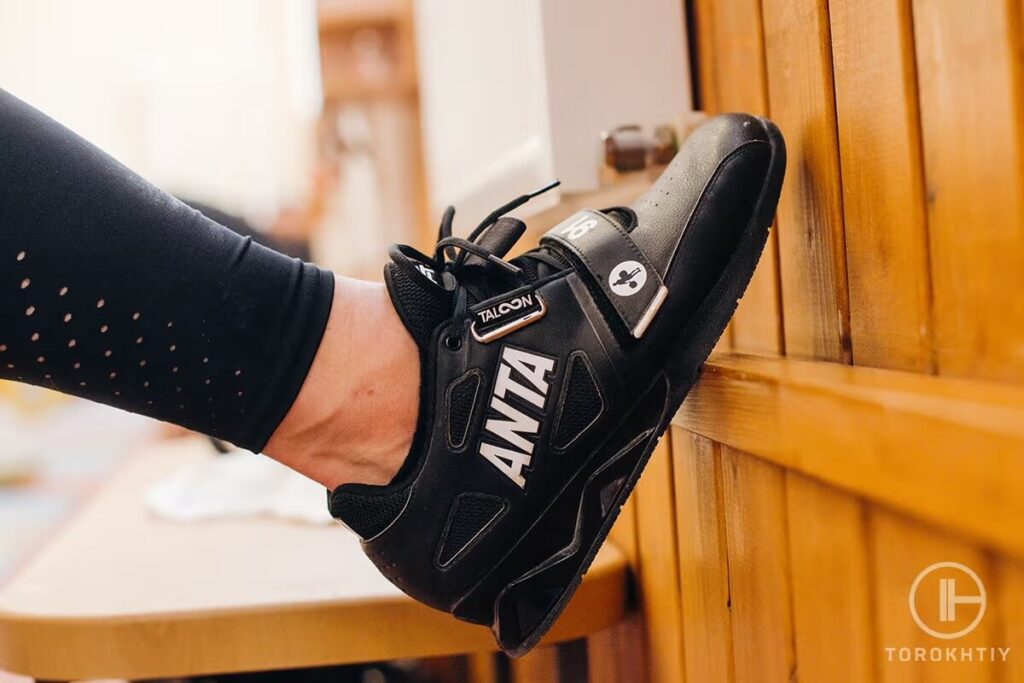
✅ Improved Stability
Women's lifting shoes have a flat and non-compressible sole, preventing the foot from rocking back and forth or rolling side to side, retaining your balance and stability. Furthermore, they have a snug fit thanks to a tight lacing system and straps, ensuring the foot does not move inside the shoe.
✅ Power Transfer
The soles on weightlifting shoes are made from rigid, non-compressible materials. Moreover, the outsole is flat at the bottom, ensuring you’re stepping down with your full foot. These combined characteristics allow you to generate more force against the ground, allowing you to lift heavier loads while remaining stable
✅ Higher Durability
Regular athletic shoes are not designed to withstand the overwhelming forces of weightlifting. Typically, the sole might give in to weight and bend or break, the mesh starts to tear from the base, the glue and stitching give out, etc.
On the other hand, weightlifting shoes are specifically designed to withstand these forces, making them safer to lift in on top of being a more worthwhile investment.
✅ Better Posture
There have been numerous studies suggesting weightlifting shoes promoted a more upright and stable posture over athletic and other shoes. Specifically, the findings indicate weightlifting shoes help you stand up straighter and keep your knees more stable, allowing you to lift more.
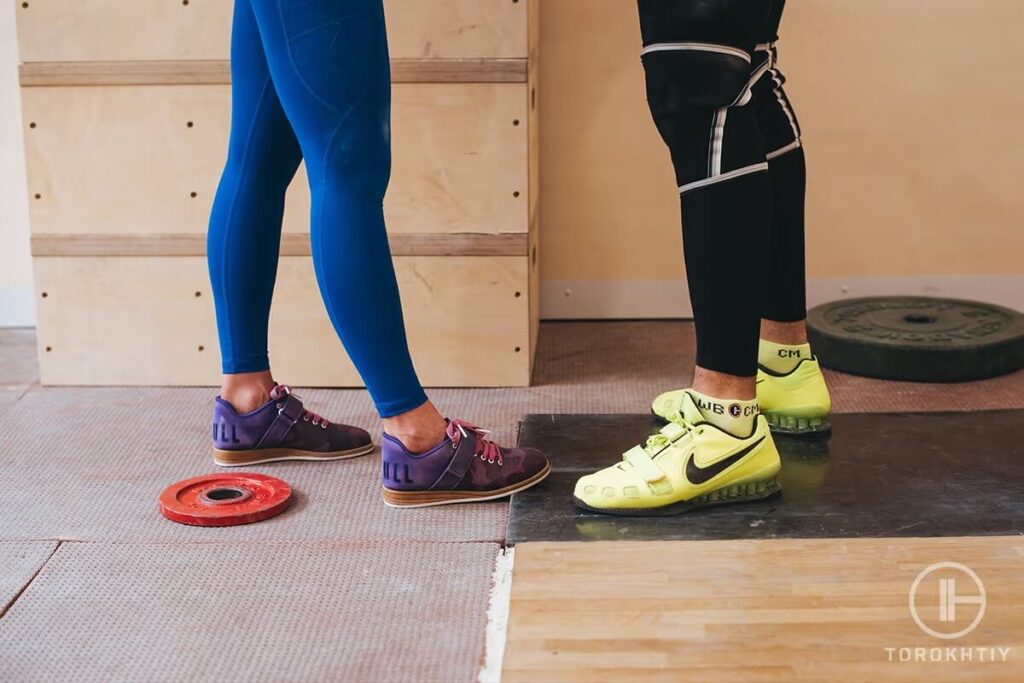
Difference Between Weightlifting Shoes And Other Footwear
Buying the right type of shoe for your preferred physical activity will make all the difference in terms of comfort and performance, among other perks. Let’s see how the weightlifting shoe stacks up against other footwear options.
1. Weightlifting Shoes VS Cross Training Shoes
Cross-training shoes are a jack of all trades, but master of none when it comes to athletic footwear. They’re designed to be universally good across various physical activities, making them a popular choice for those who engage in multiple physical activities (cross-training) or novice athletes who still haven’t found their favorite fitness niche.
In terms of benefits, cross-training shoes come with things like extra cushioning, shock absorption, breathable materials, attractive visual design, and others. But they’re never the most comfortable, or the most breathable, etc.
While they offer solid stability and support for weightlifting, they fail in comparison to weightlifting shoes when it comes to carrying heavy loads and long-term durability.
Weightlifting shoes are purpose-built for load-carrying and stability. Their key features, including the elevated heel, non-compressible sole, tight lacing, foot straps, etc. increase the safety and performance of the weightlifter compared to cross trainers.
2. Weightlifting Shoes VS Running Shoes
Running shoes are the king of comfort. The first thing you notice when you put them on is how light they are on your feet. When you take a step, you feel the outsole rolling into the smooth heel-to-toe transition.
The cushioning of the typical running shoe is unmatched, majorly reducing the repetitive impact of walking and running on your ankles, shins, and knees.
Premium running shoes feel like walking on clouds, and yet even the best pair would fail you if you tried to lift weight in them. For example, the curved outsole can cause major stability issues when it starts to rock back and forth. The soft midsole and heel - typically made of light foam - would collapse under pressure.
When carrying weight, our feet naturally widen and our toes spread apart to increase our support base, which can cause tears in the soft upper of your typical running shoe.
Meanwhile, you won’t encounter any of the above-mentioned issues with weightlifting shoes. The outsole is almost completely flat, providing a wide base, which significantly reduces trunk lean. The midsole and heel are rigid and don’t bend under pressure. Also, the toe box is typically wider in anticipation of the foot spread.
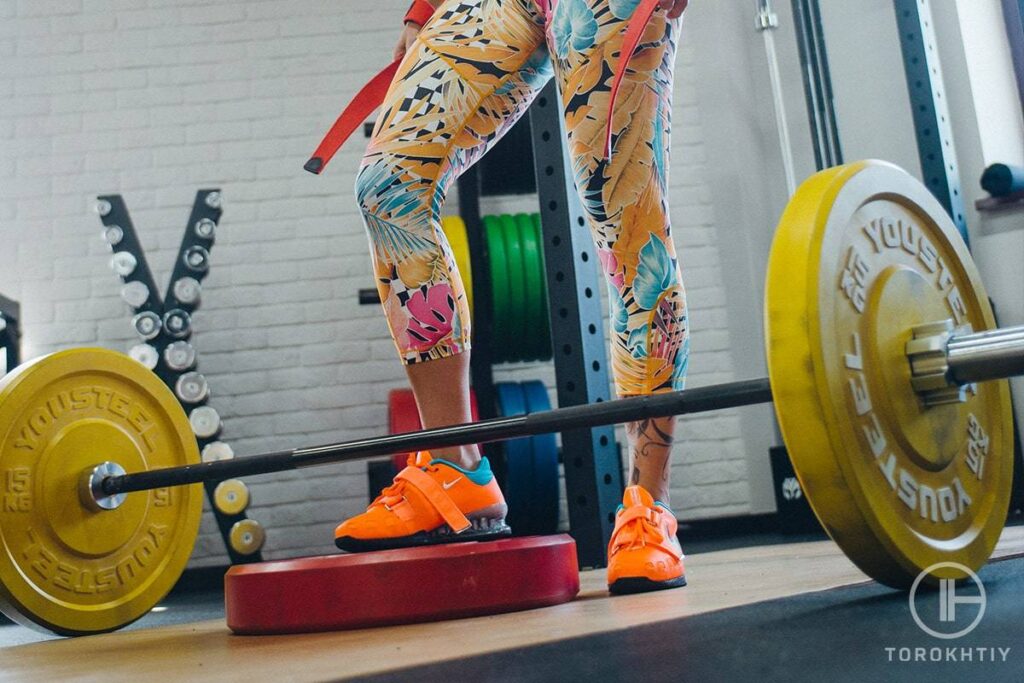
3. Weightlifting Shoes VS Lifting Barefoot
If you frequent public gyms or follow fitness content on social media, you may have seen some people weightlifting barefoot, typically just in their socks. Although it is a common preference, there is very little evidence suggesting that this method is better.
In fact, studies on the subject suggest that lifting shoes significantly increases force production during the initial lift, also known as the concentric phase. Meanwhile, the same study observed a slightly higher power output during the eccentric phase (lowering the weight back down).
However, these slight performance differences aren’t enough for a concrete answer which is best, suggesting that lifting in shoes VS lifting barefoot mostly comes down to preference.
4. Weightlifting Shoes VS Flat-Top Shoes
Arguably the most recognizable flat-top shoe of all time is the Converse Chuck Taylor All-Star, and in more recent years, Nike Air Jordan. Both were initially designed to be used in basketball, the most popular sport that utilizes flat-top shoes. That said, looking around at public gyms, it’s not uncommon to see people lift in these or similar flat-top shoes.
They’re an okay substitute for weightlifting shoes for a few reasons. Firstly, they have a similar flat outsole, giving you a wide foot base. Second, they wrap around the ankle, minimizing ankle rolling.
Third, high-top lacing creates a snug fit, allowing you to feel the support of your shoe. Also, most people tend to have an old pair they can simply repurpose for weightlifting.
That said, specialized weightlifting shoes share many of these characteristics, on top of offering additional advantages. These include, but are not limited to the elevated heel, non-compressible soles, foot straps, as well as durable yet breathable construction materials.
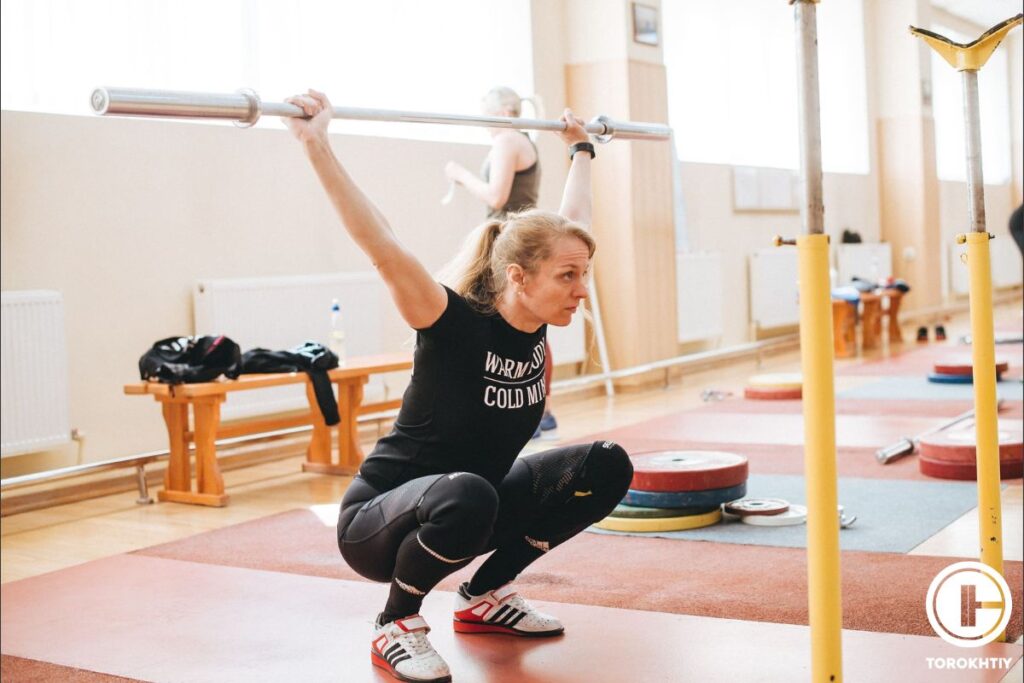
Factors To Consider When Choosing Women’s Weightlifting Shoes
It’s important to note that, while essentials mostly stay the same, not all weight training shoes for women are created equal. Factors such as fit, stability, heel height, sole flexibility, and overall design are crucial to ensure optimal performance and minimize the risk of injury. Here’s what you should consider before making a purchase:
1. Heel Height And Sole Flexibility
Most lifting shoes for women have increased heel elevation compared to regular athletic shoes. The heel height can vary, but generally, it’s between 0.5 to 1.5 inches. Choosing the right heel size is mostly about preference.
For example, a higher heel typically helps maintain a more upright posture, while a lower one keeps you closer to the ground, lowering your center of gravity.
Heel lifts have been shown to increase lifting performance in popular weightlifting exercises like the barbell squat, which is why they’re a common feature on women's squat shoes.
Namely, the study observed greater activation of major muscle groups like the quadriceps, hamstrings, and calves, while reducing pressure on the front lower leg muscles surrounding the shin and tibia bone.
On the other hand, the soles on weightlifting shoes are stiffer than your typical athletic shoe. The stiffness of the sole is meant to minimize energy loss between the foot and the ground. Furthermore, a softer foam sole could lose shape or completely break down under weight pressure.
2. Comfort And Fit
It’s important to know that weightlifting shoes prioritize performance and durability over cushioning and flexibility. You shouldn’t be surprised if they don’t feel as comfortable to wear and walk in as you might expect for a sports shoe.
Weight training shoes for women should have a tight and snug fit to prevent unwanted foot movement inside the shoe. To aid in this, they have tighter lacing around the footbridge and typically have a strap that goes on top for extra lock-in.
That said, the toe box is typically made wider to account for the natural foot splain that occurs when carrying weight.
3. Outsole And Durability
As previously touched upon, weightlifting shoes are flat at the bottom. The outsole is made from solid materials that are meant to be non-compressible. There’s very little contouring to ensure the foot remains flat on the ground, preventing energy dispersion.
Moreover, the outsoles of weightlifting shoes have grippy patterns that enhance traction, preventing slipping and sliding. Some higher-end models may even include additional aids, such as suction cups.
Some of the women's lifting shoes are made of leather, which is more rigid and less breathable than your typical knit mesh found on running shoes, for example.
However, when they are made of mesh, they will be more tightly knit and reinforced with additional stitching. While they may seem less comfortable at first, the best powerlifting shoes for women should feel unbreakable when you wear them.
Tips From the Champ
Weightlifting shoes prioritize performance and durability over cushioning and flexibility, often lacking the comfort typically found in sports shoes. When it comes to weight training shoes for women, a snug fit is essential to minimize foot movement within the shoe. This is achieved through tight lacing around the footbridge and an additional strap for extra security. Additionally, these shoes often feature a wider toe box to accommodate the natural foot splay that occurs during weightlifting.
Olympic Weightlifting Champion
4. Overall Design
Weightlifting shoes have come a long way from where they initially began. In the not-so-distant past, they were primarily built for purpose and paid almost no mind to aesthetics. They were simply made from a leather top and a flat bottom with a black-on-white color scheme.
That said, as weightlifting grew in popularity as a physical activity, the shoes took a new shape as well. Nowadays, brands are constantly looking for ways to bridge the gap between looks and performance, as appearance is a big part of marketing.
While the essential design is almost always the same - flat bottom, slim top, elevated heel - the looks can vary between different color choices, patterns, and styles.
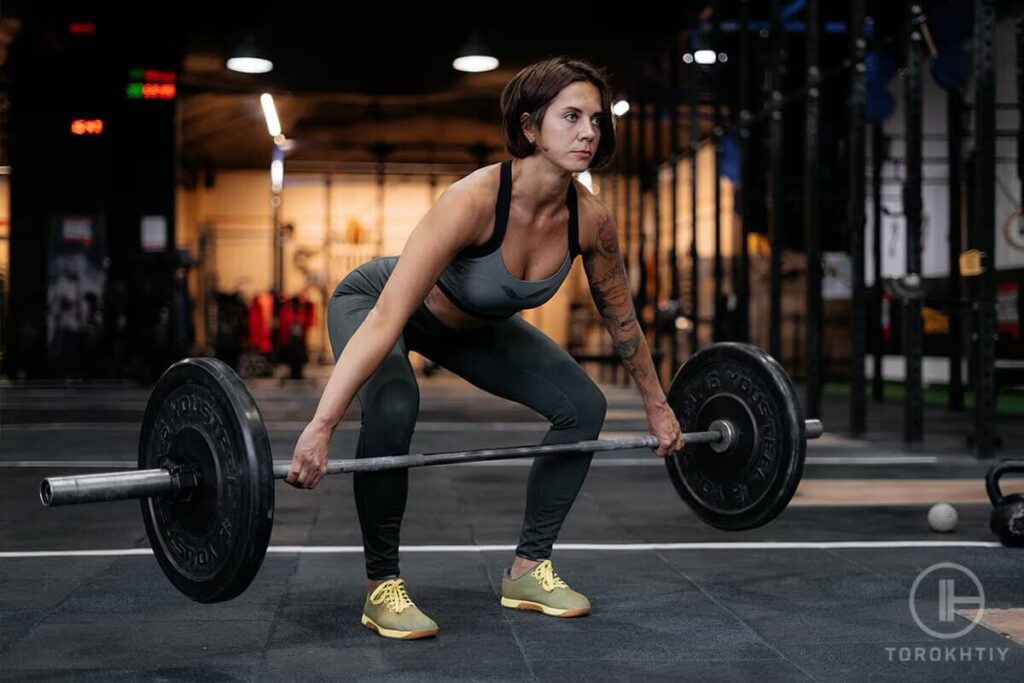
FAQ
Are High Top Shoes Better For Weight Lifting?
Not necessarily, high-top shoes can be hit or miss for weightlifting. On one hand, they offer considerable ankle support, which can enhance leg stability and prove beneficial if you have a history of ankle injuries.
But they can also limit your mobility, which can pose a challenge during exercises that require a greater range of motion, such as Olympic lifts or deep squats.
The overwhelming design choice in lifting sneakers for women seems to be low-top, suggesting that brand-conducted research found it to be a better fit for the majority of lifters.
Why Are Flat Shoes Better For Weight Lifting?
Flat shoes are better for weight lifting compared to other athletic shoes primarily because they allow the athlete to stand with their full foot against the ground. A foot in full contact with the floor has a wider and more stable base, which is helpful for attempting weight-bearing activities such as weightlifting.
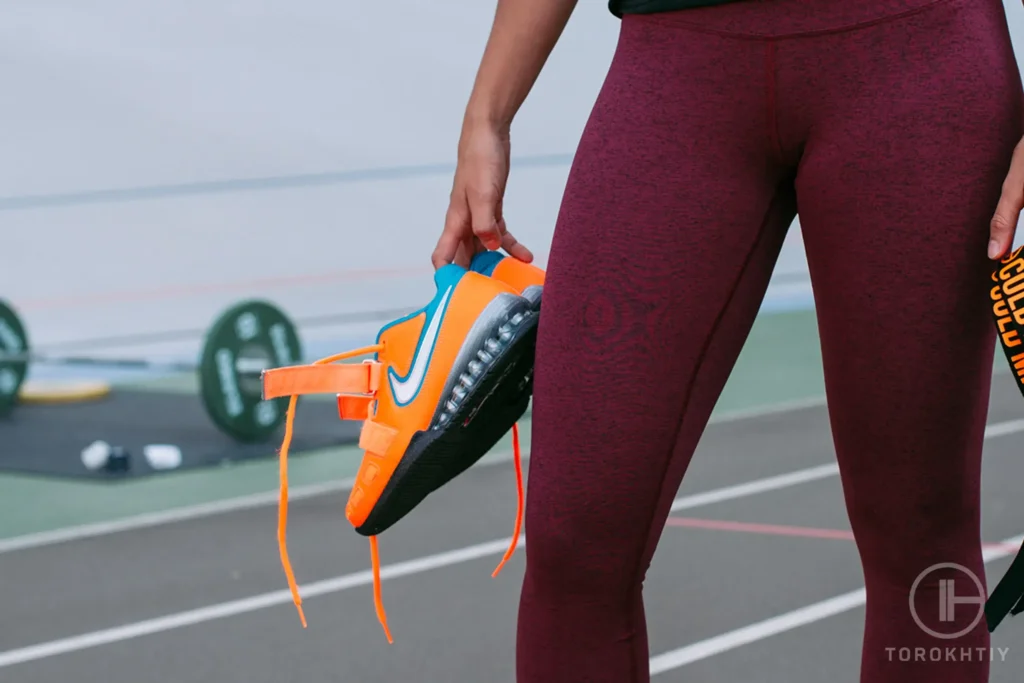
Conclusion
In summary, your chosen pair of shoes can have an impact on any physical activity, especially high-intensity ones like weightlifting.
A proper pair of lifting shoes for women not only provides stability and power transfer but also promotes better posture and joint health. In comparison, regular athletic shoes fail to provide these benefits on top of being more easily breakable.
Our award for best weightlifting shoes for women goes to the Reebok Legacy Lifter III, thanks to a great mix of value for money and timeless design.
We’d also like to hear from you. Whether you’re an experienced female weightlifter or just getting started, we’d love to know what sparked your interest in taking on this sport? Also, what kind of goals have you set for yourself in your upcoming training?
Leave a comment letting us know and feel free to connect with us on social media, where we share lots of valuable fitness content.
Also read:
- Best Nike Training Shoes
- Best Nobull Sneakers
- Best Weightlifting Shoes
- Best Reebok Functional Fitness Shoes
- Best Running and Lifting Shoes
- Cross Trainer vs Running Shoes
- Best Cross Training Shoes For Flat Feet
- Best Barefoot Shoes for Lifting
- Best Workout Shoes for Women
- Best Men’s Training Shoes
References:
- "Ripstop" Wikipedia, June 2020 https://en.wikipedia.org/wiki/Ripstop
- "Graphene" Wikipedia https://en.wikipedia.org/wiki/Graphene
- "WHAT IS NIKE REACT?" Nike https://www.nike.com/help/a/nike-react
- Hayley Legg "The effect of weightlifting shoes on the kinetics and kinematics of the back squat" Journal of Sports Sciences, April 2016 https://shorturl.at/kCJRW
- Kinesiology Program "Kinematic Changes Using Weightlifting Shoes on Barbell Back Squat" Journal of Strength and Conditioning Research 26(1):p 28-33, January 2012 https://journals.lww.com/nsca-jscr/Fulltext/2012/01000/Kinematic Changes_Using_Weightlifting Shoes_on.4.aspx
- Mark E. Hammer "Shod versus barefoot effects on force and power development during a conventional deadlift" The Journal of Strength and Conditioning Research June 2018 https://shorturl.at/klACQ
- "Chuck Taylor All-Stars" Wikipedia https://en.wikipedia.org/wiki/Chuck_Taylor_All-Stars
- "Air Jordan" Wikipedia https://en.wikipedia.org/wiki/Air_Jordan
- Zhenghui Lu "Effect of Heel Lift Insoles on Lower Extremity Muscle Activation and Joint Work during Barbell Squats" Bioengineering (Basel) 2022 Jul 8 https://www.ncbi.nlm.nih.gov/pmc/articles/PMC9312299/
- Patrick O McKeon "The foot core system: A new paradigm for understanding intrinsic foot muscle function" British Journal of Sports Medicine March 2014 https://shorturl.at/dpELY
Why Trust Us?
With over 20 years in Olympic Weightlifting, our team does its best to provide the audience with ultimate support and meet the needs and requirements of advanced athletes and professional lifters, as well as people who strive to open new opportunities and develop their physical capabilities with us.
All products we select are primarily approved and tested by the Olympic Weightlifting Champion Oleksii Torokhtiy. Under his guidance, we provide honest and reasonable assessments of the products we review by checking their characteristics, packaging, design, comfort and durability features, and general product rating. We select products from only high-quality and trusted sports brands, thus vouching for their quality.
The product testing process is described in more detail here
Author: Tanya Shaiko
News Editor, Olympic Lifting Enthusiast
Best Results: Snatch – 61 kg,
C&J – 78 kg
I’m Tanya, and I just can’t do without fitness. About six years ago, I got into Olympic weightlifting and instantly fell in love with it. Weightlifting is like no other sport – it’s just you versus the bar. Driven by my unwavering passion for an active lifestyle, I’ve been eager to share my personal journey and sports enthusiasm with others. As a journalist and photographer, my interests come full circle, adding an extra dimension to the news column that I curate. This way, I keep my readers updated with the latest happenings in the sports world.
Reviewed by: Oleksiy Torokhtiy
Olympic Weightlifting Champion
Best Results: Snatch – 200 kg,
C&J – 240 kg
Oleksiy Torokhtiy is a professional athlete boasting 20 years of experience in Olympic weightlifting. With multiple European and World titles under his belt, he has showcased his prowess in two Olympic Games (Beijing 2008 and London 2012). Upon concluding his illustrious career, Oleksiy dedicated himself to coaching. By 2022, he had conducted over 200 weightlifting seminars worldwide. He is the visionary behind an international sportswear and accessories brand known for its motto, “Warm Body Cold Mind.” Additionally, he is an esteemed author and the creator of a series of training programs and eBooks.
If you have any questions/suggestions/any other inquiries considering product reviews, you can reach out to us via email – [email protected]

